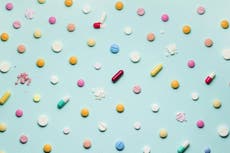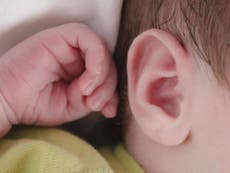I became a scientist to find a cure for my son's rare disease – I didn't, but I found so much more
Instead of trying to find a miracle cure for DiGeorge Syndrome, I realised there was so much I could do to improve my son's life right now
It wasn’t until my son Zaid was eight months old that we received the diagnosis of DiGeorge Syndrome, a rare genetic illness. We knew there was something very wrong, however, from the moment he was born. My baby had severe epileptic fits, a significant calcium deficiency, high blood sugar levels and a congenital laryngeal web, which meant that his windpipe was narrow, and he struggled to breathe. He also struggled to digest his milk. He spent the first four years of his life in and out of Newcastle Hospitals.
It was the most heartbreaking and terrifying experience. All I could hold on to was hope – could we cure him?
When I went on maternity leave, I had already decided to leave the world of banking and financial services to care for my children. Little did I know I wasn’t taking a career break, but a career change – compelled by the need to find answers to my son’s illness.
When Zaid was four, we found a brilliant specialist school for him in Percy Hedley and, as he joined his new classmates, I did mine. Then in my late twenties, I returned to college as a mature student, to refresh my qualifications. A university access course turned into an undergraduate degree, then a postgrad, then a PhD, then a postdoc.
My initial am was to find a cure for my son’s disease. In the end I found so much more.
While early in my career, my focus was on understanding the genetic factors which cause DiGeorge, and the potential for gene therapy, I quickly realised that genetics wasn’t my natural talent, so moved into molecular biology. Nevertheless, I was intimidated. I only knew one female classmate from school who went into scientific research and although she was highly talented, she found the male-dominated environment too much. However, as I entered the scientific community several years later, my experience was quite different.
Newcastle is a hotspot for the life sciences; there are so many inspirational scientists on your doorstep; scientists such as Professor Anne Dickinson, with whom it was an honour to work for my post doctorate.
Working with Professor Dickinson made me realise that working in the sciences could be a game-changer, not only for me and my family, but for society more broadly.
In 2006, the Northwick Park Disaster delivered a warning on the catastrophic potential of pre-clinical trials. Despite successful tests on primates, six out of eight subjects (two were given a placebo) had a severe adverse effect to the trialled drug. The trial highlighted that animal models are not the best predictive models for humans and the need for in vitro human testing prior to clinical trials.
The disaster prompted Professor Dickinson to realise that the research we were doing and new practices we were employing could protect people from such terrible tragedies going forward.
We had been using human-based models for research and later the development of non-animal models as tools to perform safety testing for the pharmaceutical and cosmetic industries and realised there was real potential.
We launched a company called Alcyomics, which emulates human organ and tissue responses to test drugs and cosmetics without the need for animal subjects. Knowing that our work can save lives by cutting out the need for risky human or animal trials is immensely satisfying.
I enjoyed science at school, but never saw myself being a part of the scientific community. Yet now, I’ve found a place for myself in a thriving community of health and life science innovators at The Biosphere in Newcastle, a specialist lab for the commercialisation of life sciences. Contrary to my preconceptions, I’ve discovered so many opportunities for women in STEM, and become an ambassador for the sector: my niece is changing career and studying science; my son Mahid has also pursued science and is finishing a PhD in bioprinting skin; my daughter Zennub is pursuing a career in healthcare.
While Zaid’s experiences had such an impact on our family’s career paths, working with Professor Dickinson actually took me away from focusing on DiGeorge Syndrome – her specialism was marrow transplant for leukaemia. Thanks to Professor Dickinson, my focus became more about to helping to understand disease to improve human health.
My newfound scientific expertise helped me understand what is realistic for Zaid’s health. Understanding the cause of the disease at a molecular level showed me how much was really known about the condition, and how far we were, realistically, from finding a cure or improving treatment. This wasn’t dispiriting – quite the opposite. Rather than waiting for a miracle, I was able to see that there were ways of improving my son’s life right now. My family and I began to learn to live more harmoniously with DiGeorge, rather than wishing for the situation to be different. We’ve learned to change what is within our control and accept what isn’t.
Life is so much more fulfilling today. Because of my son, because of my family, and because of science.
Dr Shaheda Ahmed is scientific manager at Alcyomics, a biotech company that conducts non-animal laboratory safety testing on pharmaceutical and cosmetic products.





Join our commenting forum
Join thought-provoking conversations, follow other Independent readers and see their replies